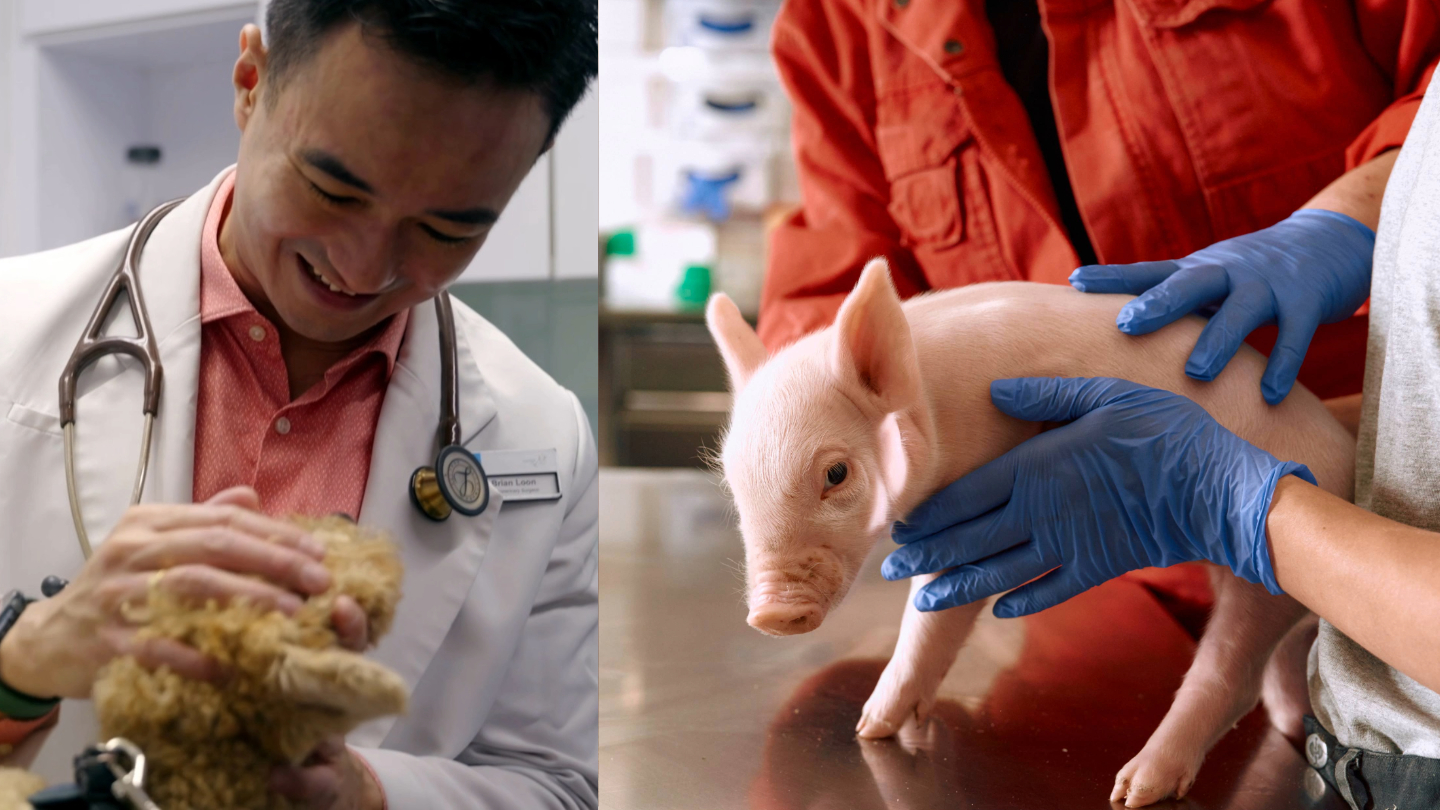Veterinarians: caught between excellence and exhaustion
For a brief moment, close your eyes and step into the shoes of a veterinarian: You work hard, you’re good at your job, and your customers – pet owners, horse owners, farmers – recognize that. They see how knowledgeable you are, but they do not see the challenges. Working days, nights, weekends; constantly on your feet, and always “on”. You’re giving it your all, but you feel that people sometimes don’t recognize that enough. A recent survey by Boehringer Ingelheim and Kynetec shows that this experience is common in the veterinary profession, across many countries. However, it’s in everyone’s power to change it. Let’s delve deeper.

Do we underestimate pet veterinarians?
During the appointments, pet owners rarely get to see the unexpected events and challenging situations that are part of a veterinarian’s day-to-day life. A pet veterinarian’s day might start with a delicate surgery, continue with the delivery of puppies or kittens, and then move on to emergency care to help an animal that has been in a road accident. Between these high-stress interventions, veterinarians support pet owners with their cats’ and dogs’ routine check-ups, health screenings, advice on preventive healthcare, nutrition, and much more. No day is ever the same, and plans are thrown out of the window when animal’s lives are on the line. Many clinic teams thrive on working this way, but it is far from easy. And because veterinarians and their teams take care to be cheerful, helpful, and above all professional when they interact with pet owners, it may be easy to overlook how demanding this line of work is – to the detriment of pet veterinarians:
Looking at the figures, it might come as no surprise that one in four pet veterinarians wishes that animal owners knew more about their commitment and the difficulties they face. And they are not alone in feeling that way.
Horse veterinarians – a small but extraordinary group
Equine veterinarians are a special breed. While there are some clinics for horses that allow equine veterinarians to work from a fixed location, many are consistently on the move, visiting stable after stable. With labor shortages in the field, many equine veterinarians need to drive further and work even longer hours. The horses they work with are majestic, sensitive, and very, very large! It’s not a line of work that is easy on the body. While it is tremendously rewarding, working as an equine veterinarian can take its toll. Horse owners only see a tiny glimpse of this life when the vet visits their stable:
Interestingly, while many equine veterinarians feel like their own clients appreciate them, a third of them also say that the veterinary profession, as a whole, does not get recognized enough. Clearly, there is a need for action.
Treating cows, pigs, and poultry: it works best when done as a partnership
Farmers and their veterinarians work closely together, often over the span of years or even decades. Some livestock veterinarians are even full-time staff at large farms. Together with farmers, they develop comprehensive treatment plans tailored to the unique needs of a herd or flock. While farmers and farm workers can perform a number of medical procedures themselves, veterinarians are there to provide specialist guidance and advice. Teamwork of this kind often creates close bonds and mutual respect, which might be why livestock veterinarians report greater levels of satisfaction than their equine and pet colleagues:
Still, one in four livestock veterinarians wish that more people understood the importance, competence, and value of the profession. And much like equine and pet veterinarians, livestock veterinarians also report working long hours (50+), especially in countries like the US, Germany, and France.
What can we do?
Many of the problems veterinarians report stem from feeling unseen and not fully understood – especially when it comes to their human side. The stress and exhaustion they push through. The desire to feel recognized for going beyond every day. And the solution to this problem isn’t heroic, nor does it require one big gesture. The solution is curiosity. It’s compassion. It’s asking questions to understand your veterinarian’s work while they do it. It’s not just thinking “I’m really glad I can always rely on them” but actually saying it out loud.
About the survey:
Kynetec conducted the survey on behalf of Boehringer Ingelheim from mid to end of March 2024 across 1056 veterinarians in Brazil (212), Japan (201), United Kingdom (170), France (162), United States (160) and Germany (151). The survey scope included companion animal (57%), equine (5%), dairy (10%), beef (8%), swine (6%) and poultry (3%) specialist veterinarians as well as mixed practices without a main focus (11%). Computer-assisted web as well as telephone interviews in local language were used to collect the data.
Related Content

A Day and night veterinary clinic for pet care: Our collaborating partners provide veterinary assistance


